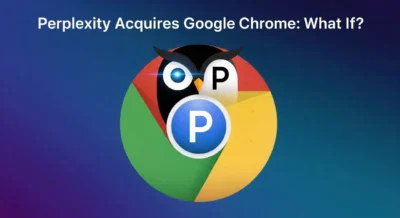Top Trends in Fintech App Development: Money has always been personal. Think about it—how many times a day do you check your bank balance, send a payment, or wonder whether you’re saving enough? Chances are, you’re doing most of that right from your phone. Fintech apps have turned what used to be complicated financial chores into just a few taps.
But here’s the interesting part: the fintech industry isn’t slowing down. Every year, fintech app development trends bring fresh innovations, making apps smarter, safer, and far more personalized. From AI-driven insights to biometric logins and even sustainable finance, the way we handle money is evolving at lightning speed.
So, if you’ve ever wondered what’s next in the world of financial technology, this article is your guide. Let’s dive into the Top Trends in Fintech App Development that are shaping how we save, spend, and invest.
The Rise of AI-Powered Financial Assistants
We’ve all had that moment where we stare at our bank statement, trying to figure out where our money went. This is where AI in fintech changes the game.
Fintech apps are increasingly using artificial intelligence to act like personal financial assistants. These digital buddies don’t just crunch numbers—they study your spending, predict upcoming expenses, and even recommend better financial choices. Think of them like Siri or Alexa, but with a money-savvy brain.
Here’s the kicker: the more you use them, the smarter they get. For example, if you’re investing in mutual funds, your app may suggest other investment products that match your risk profile. That’s personalization powered by financial technology.
Biometric Security: Because Passwords Are So 2015
Let’s be real—nobody enjoys remembering long passwords with symbols and capital letters. That’s why biometric authentication is becoming a must in fintech app development trends.
From fingerprint scans and facial recognition to voice authentication, apps are prioritizing both digital payments security and convenience. The goal? To make sure your money is protected without making you jump through hoops.
And with hackers getting smarter, fintech apps are adding AI-driven fraud detection systems. So, if someone tries to log in from an unusual location, your app catches it instantly. This combination of biometrics and AI is setting a new standard in mobile banking apps.
Embedded Finance: Banking Without the Bank
You’ve probably noticed how apps that aren’t even banks are suddenly offering financial services. Ordering food? You might see a “Pay Later” option. Shopping online? Split payments with EMIs.
This is called embedded finance, one of the biggest fintech industry innovations right now. Developers are integrating financial services into non-financial apps so you can do banking tasks without ever realizing it.
For businesses, it keeps users engaged inside their platforms. For customers, it means faster, smoother payments. Imagine booking a flight and instantly getting travel insurance—no extra apps, no extra steps. That’s the future of fintech apps.
Blockchain Beyond Crypto
Say “blockchain,” and most people think Bitcoin. But the truth is, blockchain in finance is expanding far beyond cryptocurrencies.
At its core, blockchain is a secure, transparent ledger system. In fintech, that’s a goldmine. It is being used by apps for fraud protection, identity verification, and cross-border payments.
Picture this: instead of waiting three days for an international wire transfer, blockchain can make it happen in minutes—sometimes even seconds. And the cherry on top? Much lower fees. That’s why businesses, freelancers, and individuals are all paying attention to this trend in fintech app development.
Gamification: Making Money Fun Again
Let’s be honest—managing money used to feel boring. But fintech app development trends are flipping the script by adding gamification.
Now, saving money can feel like playing a video game. Apps reward you with badges, points, or even cashback when you hit savings goals. Some even let you “level up” your financial health.
Why does it work? Because gamification keeps people engaged. Instead of dreading budgeting, users feel motivated to track expenses, invest, or save. This is one of those fintech industry innovations that’s here to stay.
Hyper-Personalization with Big Data
Not everyone spends money the same way. Some prioritize travel, others prefer investing, and some just want better control over bills. This is where big data in fintech apps plays a huge role.
By analyzing spending patterns, apps can offer hyper-personalized recommendations. For instance, they can suggest how much you should save for a trip or which credit card offers are being underutilized.
In short, mobile banking apps are becoming less like generic tools and more like personal finance coaches. That’s the power of financial technology driven by big data.
Sustainable and Green Finance
Here’s something refreshing: sustainability is making waves in the fintech world. More users, especially millennials and Gen Z, want their money to have a positive social or environmental impact.
This has given rise to green finance within fintech app development trends. Apps now track carbon footprints, suggest eco-friendly spending, and offer “green” investment portfolios. Some even let you offset the environmental impact of your purchases.
It’s not just about wealth building anymore—it’s about building a better future through financial technology.
Voice-Enabled Transactions
Picture this—you’re cooking dinner and suddenly remember you need to pay your electricity bill. Instead of putting everything down, you just say: “Pay my bill.”
That’s the power of voice-enabled fintech apps. They make transactions more convenient, especially for elderly or differently-abled users.
Sure, there are still challenges. Natural language processing needs to be precise—nobody wants to send ₹5,000 instead of ₹500. But as the tech improves, voice-enabled digital payments are poised to become mainstream.
Real-Time Payments: Goodbye Waiting
If you’ve ever waited days for a payment to clear, you know how frustrating it is. Luckily, real-time payments are solving that problem.
In markets like India, UPI has already set the benchmark. Users now expect instant transfers, and developers are making sure it happens. Businesses benefit from faster cash flow, while individuals enjoy peace of mind.
This isn’t just a convenience—it’s becoming a future of fintech apps standard. Waiting 2–3 business days? That’s history.
Open Banking and APIs: Collaboration Over Competition
Here’s a trend that doesn’t always get headlines but is shaping the fintech ecosystem: open banking APIs.
Open banking allows secure sharing of financial data between banks and third-party apps. That means you can connect your savings account, investment app, and loan platform—all in one place.
For users, this means more control and a unified view of finances. For developers, it means endless possibilities to create apps that truly serve customer needs. It’s collaboration, not competition, that’s fueling the fintech industry innovations.
Wrapping It Up: Top Trends in Fintech App Development
The Top Trends in Fintech App Development are more than just buzzwords—they’re redefining how we interact with money. From AI assistants and biometric security to blockchain-powered payments and eco-friendly finance, the future of fintech apps is personal, fast, and meaningful.
The biggest shift? Fintech is no longer about just “managing money.” It’s about creating experiences that blend security, personalization, and even sustainability. Whether you’re a developer exploring fintech app development trends or a user enjoying smarter mobile banking apps, one thing’s clear: the financial revolution is already in your pocket.
So, the next time you unlock your phone to check your balance, remember—you’re not just looking at numbers. You’re looking at the future of money, powered by financial technology.





